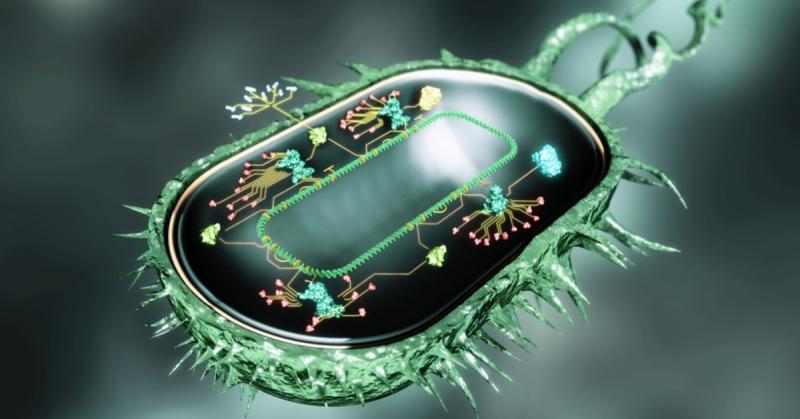What is Synthetic Biology?
Synthetic biology involves designing and constructing new biological parts, devices, and systems as well as redesigning existing natural biological systems. Scientists involved in this field believe that biology can be treated as an engineering discipline where biological organisms or biological systems are designed and built from standardized functional parts and devices. Using principles of engineering, biology and computer science, synthetic biologists aim to design and construct novel organisms with useful functions not found in nature.
Applications of Synthetic Biology
Biofuels: One major application of Synthetic Biology is in generating renewable and green biofuels. Engineered microbes are being designed that can efficiently produce biofuels like ethanol, butanol or fatty acid based diesel from various plant biomass and agricultural wastes. Some examples include modification of yeast to produce fatty acid based biofuels from sugar cane and modification of E. coli bacteria to generate next generation biofuels like isobutanol from cellulosic biomass.
Pharmaceuticals: Synthetic biology techniques allow designing microbes to produce complex therapeutic drugs and antibiotics more efficiently and inexpensively compared to conventional methods. For example, yeast has been engineered to produce artemisinin, an antimalarial drug, and E. coli engineered to generate glucagon-like peptide‐1, used for treatment of diabetes.
Biomaterials: Another promising application is using synthetic biology approaches to program microbes to produce novel green biomaterials like bio-plastics, rubber and specialized fibers as an alternative to petrochemical derived counterparts. Recent works include engineering bacteria to secrete spider silk proteins for novel biomaterials applications.
Bioremediation: Engineered microbes show potential in bioremediating environmental contaminants and pollutants through bioaugmentation approaches. Work is ongoing in programming microbes capable of breaking down hydrocarbon pollutants, cleaning up pesticide residues, absorbing heavy metals, degrading chlorinated compounds and decontaminating nuclear waste sites.
Synthetic Genomes and Minimal Cells: One of the major goals in this field is synthesizing artificial genomes and building minimal synthetic cells with basic genomic instructions to exist autonomously. In 2010, J. Craig Venter Institute assembled the first self-replicatingsynthetic bacterial genome. More recent developments include assembling genomes 10 times larger than prior efforts and developing minimal synthetic cells controlled by only 4 genes. This could open doors for designing protocells for new functions.
Challenges and Issues in Synthetic Biology
Safety: One principal concern regarding synthetic biology is the biosafety of artificially engineered organisms and potential risks they may pose if released into the environment accidentally or intentionally. Strict containment measures and biosafety regulations will be required to prevent spread of engineered genes into wild populations.
Dual-use risk: There is an inherent 'dual-use' risk that the knowledge and techniques accrued in synthetic biology could potentially enable biological weapons development posing serious national security threats. Biosecurity measures and regulations need oversight to ensure research is not misused for bioweapons purposes.
Intellectual property: As synthetic biology allows for engineering life at molecular scale through modularity and standardization, intellectual property issues regarding ownership, patenting and commercialization of novel artificially synthesized lifeforms need extensive analysis and policy discourse.
Bioethics and public perception: Early public engagement by researchers along with transparent communication regarding goals and potential impacts of synthetic biology will help address ethical, legal and social implications arising from re-designing life at its basic genetic level. Consent building is crucial for ensuring public acceptance of applications in medicine, agriculture and environment.
Regulatory gaps: Bridging of regulatory gaps is required for oversight of the rapidly evolving field of synthetic biology and products falling under dual jurisdictions. International frameworks also need harmonization to ensure common biosafety standards globally. Overall, prudent governance guided by principles of ethics, safety and security will enable Responsible Research and Innovation in this transformative area of science and technology.
As a powerful emerging discipline integrating biology, engineering and computer sciences, synthetic biology holds potential to address diverse challenges through novel applications yet responsible development and oversight is essential. With prudent research, open discourse on implications, precautionary safeguards and adaptive governance synthetic biology could revolutionize industries and medicine sustainably while ensuring human and environmental well-being. Its long-term societal impacts will depend upon guiding principles of safety, security and ethics adopted globally as this field reshapes life through science.
Get this Report in Japanese Language-合成生物学
Get this Report in Korean Language-합성 생물학
About Author-
Alice Mutum is a seasoned senior content editor at Coherent Market Insights, leveraging extensive expertise gained from her previous role as a content writer. With seven years in content development, Alice masterfully employs SEO best practices and cutting-edge digital marketing strategies to craft high-ranking, impactful content. As an editor, she meticulously ensures flawless grammar and punctuation, precise data accuracy, and perfect alignment with audience needs in every research report. Alice's dedication to excellence and her strategic approach to content make her an invaluable asset in the world of market insights.
(LinkedIn: www.linkedin.com/in/alice-mutum-3b247b137 )
